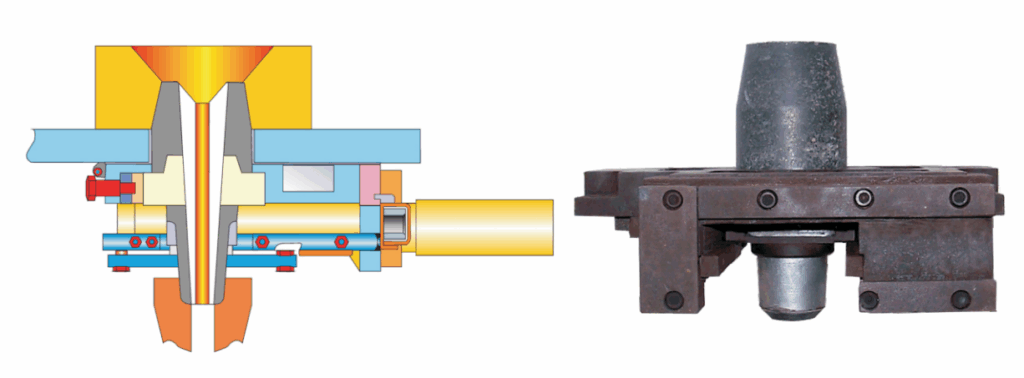Tundish Nozzle Systems: A Core Technology for Efficiency Enhancement in Steelmaking
2025.4.23
In continuous casting processes, the tundish nozzle system serves as the critical throat component for molten steel transfer, directly impacting slab quality, energy consumption, and operational stability. With growing industry demands for high-efficiency casting and clean steel production, technological innovations in nozzle systems have become pivotal for advancing metallurgical processes.

I. Technical Challenges and Industry Requirements
Modern nozzle systems must simultaneously address three conflicting demands:
- Extreme Condition Resistance: Withstanding molten steel erosion at 1580-1750°C requires materials combining high corrosion resistance (annual erosion rate <1.2mm/8h) and thermal shock resistance (>200 thermal cycles).
- Precision Flow Control: Maintaining steel flow deflection within ±5° to prevent slab defects like subcutaneous bubbles and central segregation.
- Smart Monitoring Capabilities: Real-time erosion monitoring with over 95% prediction accuracy to ensure continuous casting stability.
Persistent challenges include alumina clogging and unpredictable erosion patterns during multi-heat sequences. According to World Steel Association data, global steelmakers lose over 12 million tons of annual production capacity due to nozzle-related abnormalities.
II. Technological Innovation Trends
Recent advancements focus on three key areas:
1. Composite Gradient Material Systems
Zirconia-spinel-carbon composite structures with nano-scale grain boundary reinforcement and graded porosity design demonstrate 1.8× higher corrosion resistance than conventional materials. A Chinese steel mill reported extended sequence length from 7.5 to 14 hours and 2.3% improved yield using such systems.
2. Hydrodynamic Optimization
Multiphase flow simulation-driven innovations include:
Gas curtain technology minimizing steel reoxidation
Swirl stabilizers reducing turbulence intensity to <5%
Multi-stage flow rectifiers achieving >90% equiaxed crystal ratio
Gas curtain technology minimizing steel reoxidation
3. Intelligent Monitoring Solutions
Multi-sensor modules integrating temperature, pressure, and vision systems with machine learning algorithms enable erosion rate prediction errors ≤0.05mm/h. A European mill reduced unplanned downtime by 82% through such implementations.

III. Future Development Pathways
Emerging technologies address new industry demands:
Digital Twin Models: Full lifecycle performance simulation
Ultra-Thin Wall Nozzles: For ≤15mm thin-strip casting
Hydrogen-Compatible Materials: Resisting hydrogen permeation in reduction atmospheres
The evolution of nozzle systems now hinges on cross-industry collaboration and standardized innovation. Leading material scientists, digital solution providers, and equipment manufacturers are forming strategic alliances to accelerate technology commercialization. Within this ecosystem, specialized suppliers like JISTEEL participate in industry consortia to advance intelligent nozzle architectures.

